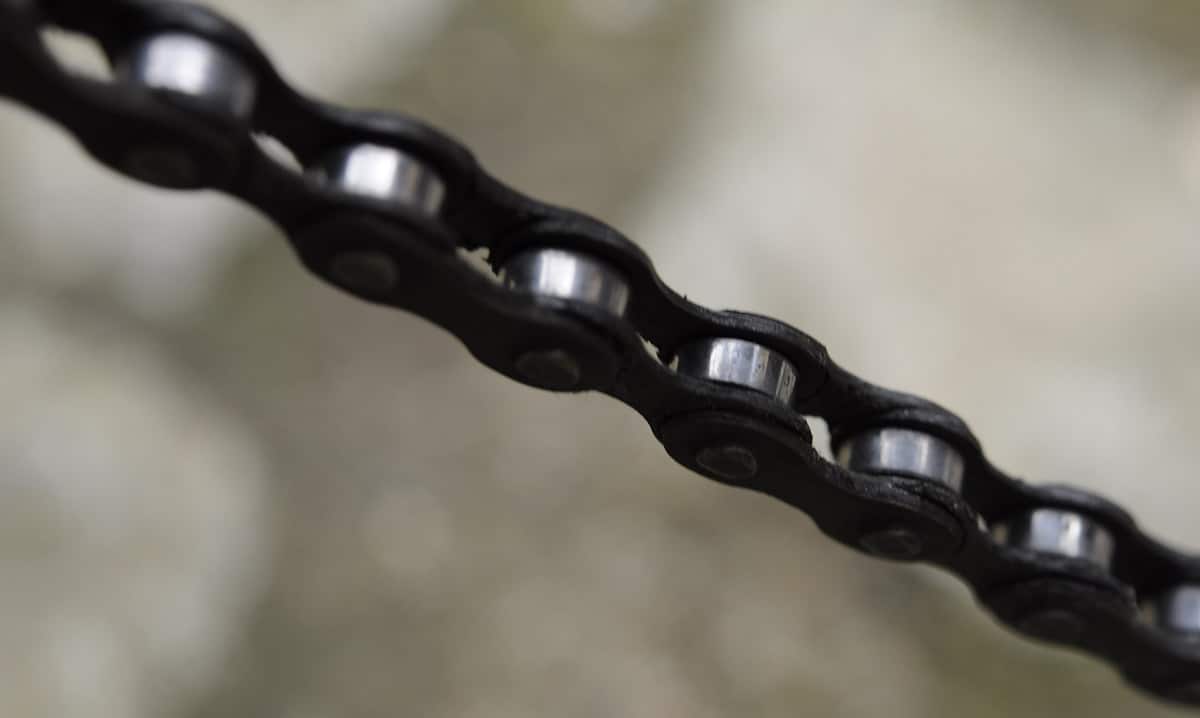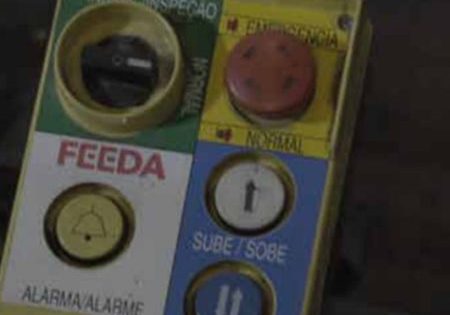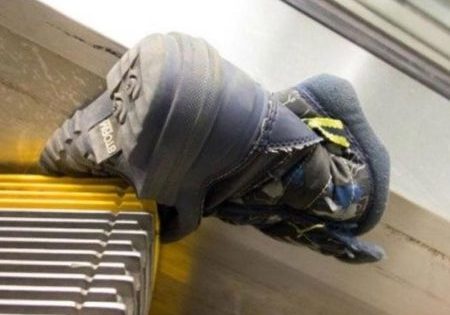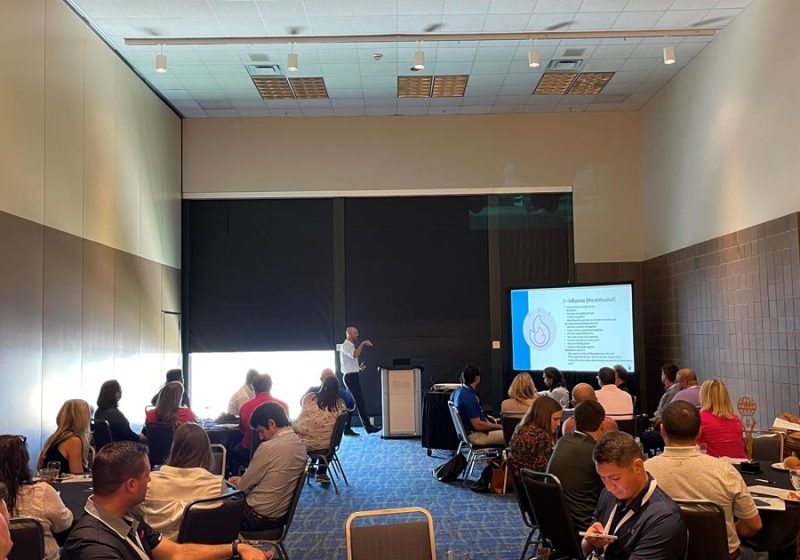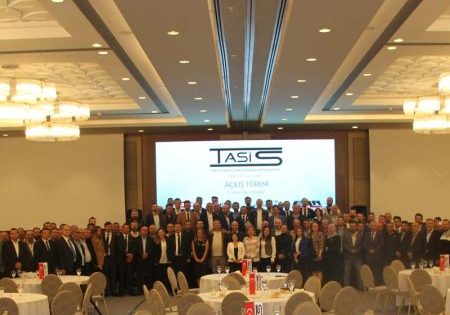These important components transmit power and convey items, so they must be diligently maintained.

Value: 1 contact hour (0.1 CEU)
This article is approved for Continuing Education by NAEC for CET® and CAT®.
EW Continuing Education is currently approved in the following states: AL, AR, FL, GA, IL, IN, KY, MD, MO, MS, MT, OK, PA, VA, VT, WV and WI. Please check for specific course verification of approval at Elevator Books.
Learning Objectives
After reading this article, you should have learned about:
- Increased familiarity with precision roller chain and the B29.1 Standard
- Increased familiarity with chain components
- Understanding the importance of proper and frequent lubrication
- Realizing that sprockets should typically be changed when replacing chain
- Being able to identify likely types of chain failure and corrective actions
Standard Ken Smith disclaimer: I’m an escalator and moving walk guy, so my knowledge of elevator chain use is somewhat limited.
Chains are commonly used in our, and many other, industries to transmit power and convey items. Since I have previous experience managing the product engineering department for a large U.S. chain company, and am a member of the ASME B29 Chain Committee, I thought I could provide some useful information about chains used on elevators, escalators and moving walks. I learned a lot about chains at work, and from some extremely intelligent mentors who started in the industry long before I did, namely, Dick Virgo, Gail Worsley and John Wright. There were also many others along the way. Thanks, guys!
To my knowledge, the vertical-transportation (VT) industry primarily uses three types of chain:
1) Precision roller chain: Single- and multiple-strand precision roller chains are typically used as drive chains, whether they are between the motor and gearbox or the handrail drive chains on escalators and moving walks. Some readers may have seen an old Peelle escalator with a precision roller chain molded into the handrail for a very positive drive, and extended pin precision roller chains used as the step chains. Private residence elevators also may use this type of chain in lieu of cables to support the cab. These chains are standardized in ASME B29.1 and ISO 606.
2) Engineering-class chain: Escalators and moving walks typically use engineering-class chains to connect the steps or pallets. These chains are specially designed for each application and, because of their many variations, we of the B29 chain committee have never developed a standard for escalator step or pallet chains. The closest standard is B29.15M Steel Roller Type Conveyor Chains, Attachments and Sprocket Teeth.




3) Link chain: I have only seen link chains used on some elevators, and I am not planning on discussing them in this article.
Roller chain has been around for more than 140 years; it was patented in 1880. Development of roller chain began in earnest as bicycles, motorcycles, automobiles and airplanes were introduced. As requirements for roller chain increased, so did the automation of its manufacture. These precision roller chains were standardized in 1930 by the American Standards Association (now ANSI — the American National Standards Institute) in ASA B29a. This standard later became ASME B29.1. Over time, sprocket requirements, horsepower tables and, more recently, minimum ultimate tensile and dynamic strength requirements, have been added.
Precision roller chain, shown in the photo at left, and engineering-class chain consist of commonly named components: inner and outer plates or links, pins, bushings and rollers. Rollers, bushings and the inner links form what the chain industry calls a roller link. The roller link is held together by the bushings press-fit into the inner links. Note that some engineering class chains have flats on the ends of the bushings to keep them from rotating in the link. The pins are also press fit into the outer links. The pin ends are typically staked on the ends for “insurance.” Some chains have cotter pins or snap rings performing a similar function.
Chain integrity is due to the press fit of the components into the links. The holes in the link plates are almost always punched. The better the quality of this hole, as far as consistent diameter and taper, the heat treat of the link and consistent diameter of the pins or bushings, among other things, the better the quality of the chain. Lower-quality chain tends to have poor-quality holes, varying diameters of round parts and inconsistent heat treat. The old saying often attributed to Benjamin Franklin, “The bitterness of poor quality remains long after the sweetness of low price is forgotten,” certainly applies here.
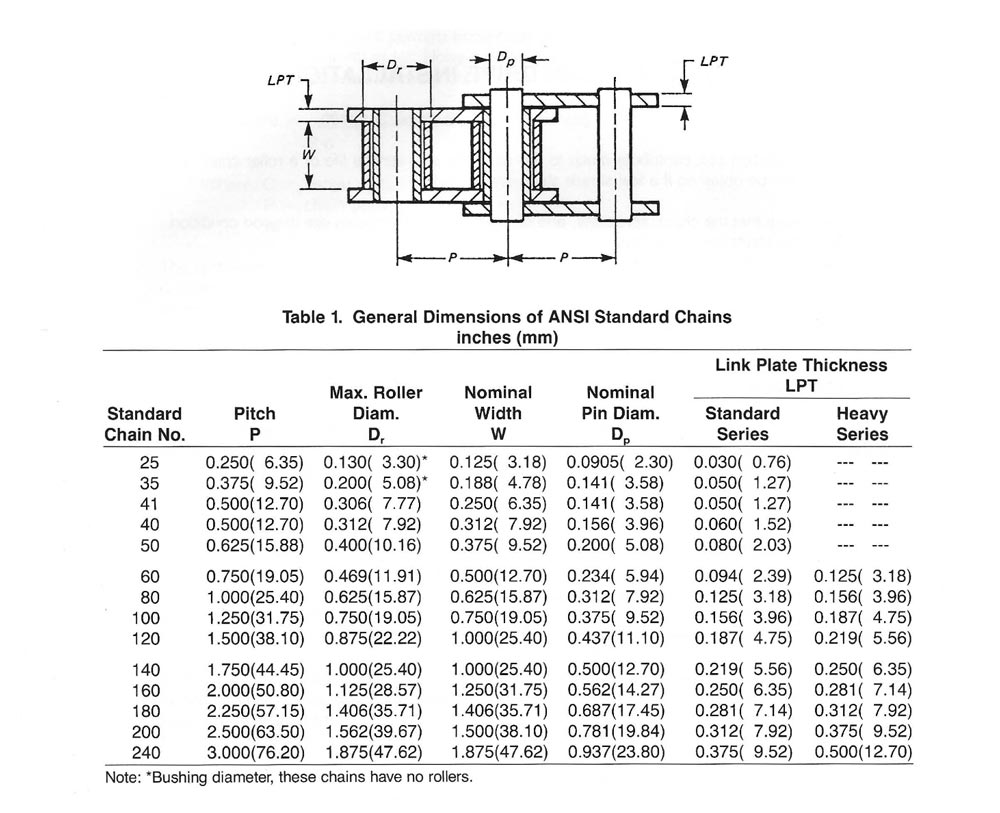

Precision Roller Chain Numbering System and Dimensions
In ASME B29.1 and every chain manufacturer’s catalog that I have ever seen, there is a table substantially similar to the one on the previous page (Table 1) giving the nominal dimensions of each size of precision roller chain. These chains are quite nicely designed with the major component dimensions of each size chain proportional to the pitch (distance between rollers). The numbering system of these chains is based on pitch in 1/8 in.- increments, for example: 60 chain is 6/8- or 3/4-in. pitch. The righthand number is typically “0,” but can be “1” for a lightweight chain (like 41) or “5” for a rollerless chain (like 25 and 35). I have never seen lightweight or rollerless chain used in our industry; however, there may be a door operator or two that I have not seen. The B29.1 standard and catalogs also contain charts showing the allowable horsepower for each chain size based on sprocket size and type of lubrication. B29.1 also covers sprocket design for these chains.
The International Organization for Standardization (ISO) developed ISO 606 short-pitch transmission precision roller chains and chain wheels. ISO 606 is another standard covering precision roller chain. Like B29.1, ISO 606 numbers the chains by pitch. However, they are numbered in 1/16-in. increments. Therefore, 60 chain would be 12 A, with the “A” denoting ANSI chains. There are also “B” series chains that are the same pitch but have some slightly different dimensions, as the “B” series represents the British Standards Institute (BSI) chains.
I have made a comparison above (Table 2) to show the dimensional differences between the ANSI B29.1 (ISO A series) and the BSI (ISO B series) chains:
As you can see, there are differences, albeit minor ones. I manufacture a chain breaker and, for this application, the roller and pin diameters and inside-width differences from ANSI chain are important to account for. For most applications, different sprockets and strength must be taken into account. I have not seen many “B” series chains in North America, outside of food-industry machinery and some agricultural equipment, but I’m sure they are coming.
One of the first things that I would like to address is the common use of the term “chain stretch.” For you scientific types out there, we know that, when loaded below its components yield strength, a chain will elongate, and then come back to approximately its original length (I suppose you could call this stretch). An example would be measuring chain length, measuring it again when someone gets into a private-residence elevator car and measuring it yet again when they get out (assuming chain is supporting the car). If a chain is loaded beyond its yield strength, it will be longer than its original length without the load. If the load is great enough, the chain will fail or break.
Good-quality, precision roller chains are preloaded at the factory during the assembly process. The process varies, but a significant load is applied to the chain during manufacture, which causes the chain to lengthen slightly. Preloading minimizes or eliminates the initial elongation of a non-preloaded chain and increases the fatigue strength of the chain. A high preload is necessary on chain used in highly loaded applications.
The phrase chain stretch is commonly — and incorrectly — used to describe wear. As chain articulates under load, it undergoes wear, not stretch. The wear occurs between the pin and bushing of the chain, and is not visible unless the chain, or connector link, is disassembled. Chain will wear faster if not adequately lubricated, contaminated with abrasive material (dirt, sand, concrete dust, etc.) or run at higher-than-recommended loads.
Chain drives will accept a small amount of chain elongation, typically 2-3%, before the chain needs to be replaced. The amount of acceptable elongation depends on things like the orientation of the drive. For example, a Montgomery solid balustrade escalator typically has a near-vertical chain drive. It will accept approximately 2% elongation before you consider replacement. A Montgomery glass balustrade escalator has a near-horizontal drive and should accept approximately 3% elongation before the chain requires replacement. These numbers are somewhat conservative but are a good rule of thumb. Some chain manufacturers can provide chain wear gauges, or you can just measure pin to pin over as long a straight stretch as you can, then compare this length to the nominal pitch (distance from pin to pin). Percent elongation is [(measured length-nominal length)/nominal length]. Precision roller chain pitch, dimensions, and other useful information is in B29.1 (I suggest you buy a copy from ASME and help support the standard).
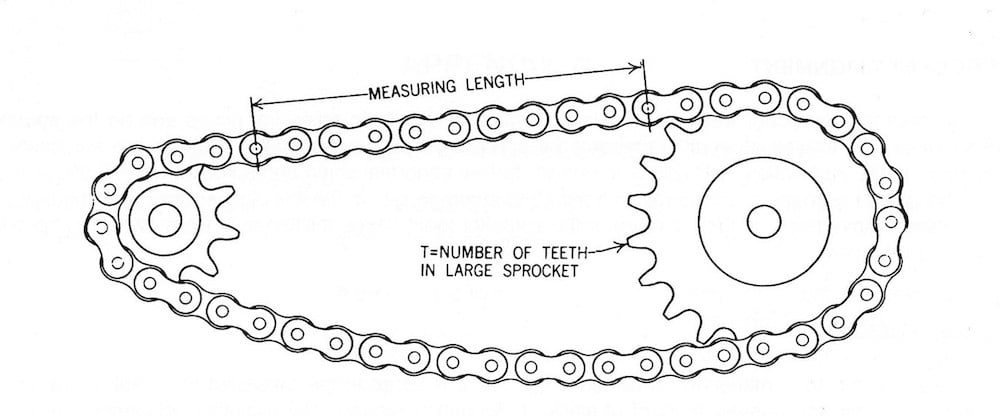
Engineering-class chain is a different animal, running at different speeds and loads. Because it typically connects steps or pallets, step/pallet mesh (or lack of) is usually the criteria for replacement. In all the cases that I am aware of, step/pallet chain is replaced before it reaches even 1% elongation.
If a chain has elongated too much prior to being replaced, it can begin to hop the sprocket teeth. When this occurs, the chain (and sprockets) should be replaced immediately.
Sprocket replacement: I can almost hear all of the mechanics going “AARGH!” as they read this. Chain engineers like to see sprockets replaced when chain is replaced, unless the chain is replaced with a very small amount of elongation. Chain salesman like new chain on old sprockets because you will have to replace the chain more frequently. As a chain wears, so do the sprockets. This changes the profile of the sprocket tooth and affects how the chain interacts with the sprockets. When a new chain is placed on worn sprockets, it will elongate faster. Note that it is difficult, if not impossible, to see the amount of sprocket wear that will affect chain life. However, you can see an excessively worn sprocket: Typically, the tooth is “hooked” or appears to be bent.
For drive chains, I recommend changing the sprockets when you change the chain. For step/pallet chains, this is unlikely unless visible wear is noted on the tooth. Way back in the ’80s at Montgomery, we machined a plug gauge to check the tooth wear on bull gear sprockets. Putting a new chain on worn sprockets is like changing your car’s oil but not the filter.
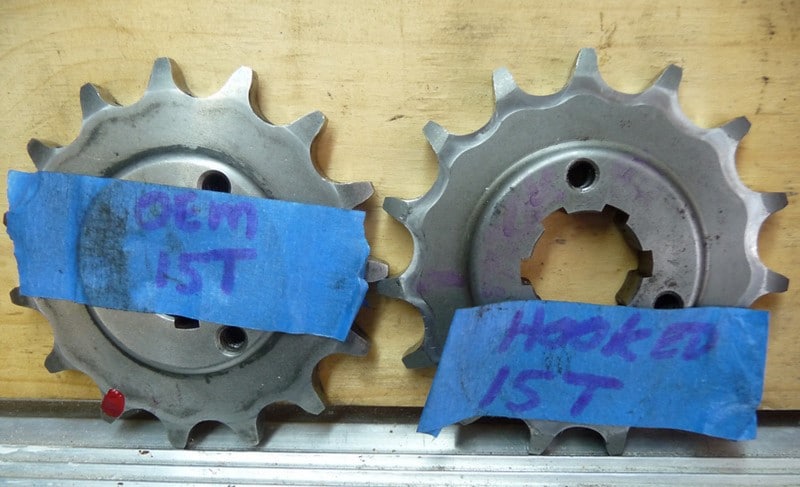
Lubrication
To be effective in prolonging chain life, lubricant must penetrate into the chain’s pin/bushing area (similar to a journal bearing), as shown in the image below. Lubricant applied to the rest of the chain will help protect the links and rollers from corrosion but will not help with elongation of the chain. In practice, it can be somewhat difficult getting oil into the small gap between the inner and outer links.
Every application that I have seen in our industry, with the caveat that I haven’t seen them all, is fine with Type A drip or manual lubrication, due to the sprocket size and speed (RPM) of the drive. The horsepower tables for precision roller chain found in B29.1 or manufacturers’ catalogs provide information on lubrication type required.
Most, if not all, equipment manufacturers have recommendations for the particular chain oil, or specifications for the type of lubricant they recommend on their products. It pays to follow the manufacturer’s recommendations. I’m a motorcycle nut, so one example of incorrect lubrication that comes to mind was when O-ring chains came out for motorcycles. Many of these chains were ruined in short order by people applying conventional chain lubes to them that destroyed the O-rings.
Castrol is marketing a new product for escalators and moving walks that uses a carrier to get dry film lubricant into the pin/bushing area. Their testing looks quite promising.
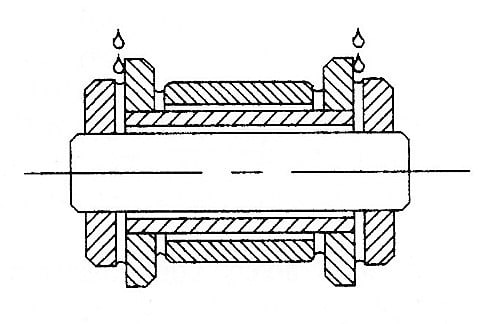
Typical Chain Failures in the VT Industry
The most common problem with chain that I see when I am inspecting equipment is inadequate lubrication. Some equipment relies on manual lubrication of the chain, and some has automatic oilers. I have seen many escalators and moving walks with chains that have inadequate lubrication. Many times, they are easily identified by fretting corrosion — red rust — seen on the links around the pin/bushing joints. Note that the best photo I could find for fretting is on the links of a leaf chain, not a roller chain.
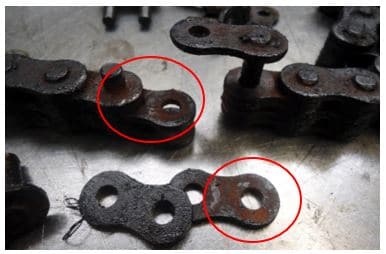
Once fretting occurs, chain life has been reduced considerably. Most precision roller chains have carburized or carbonitrided pins and bushings. They have a thin but very hard layer on the surface to minimize wear. Once a chain has run without lubrication and frets, this layer can be quite worn. If it wears through, the chain elongates quite rapidly. Note that lack of lubrication can cause the sprockets to wear faster than usual.
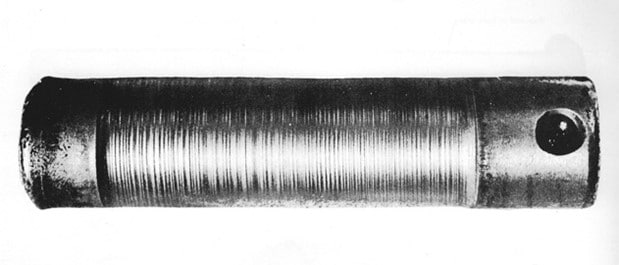
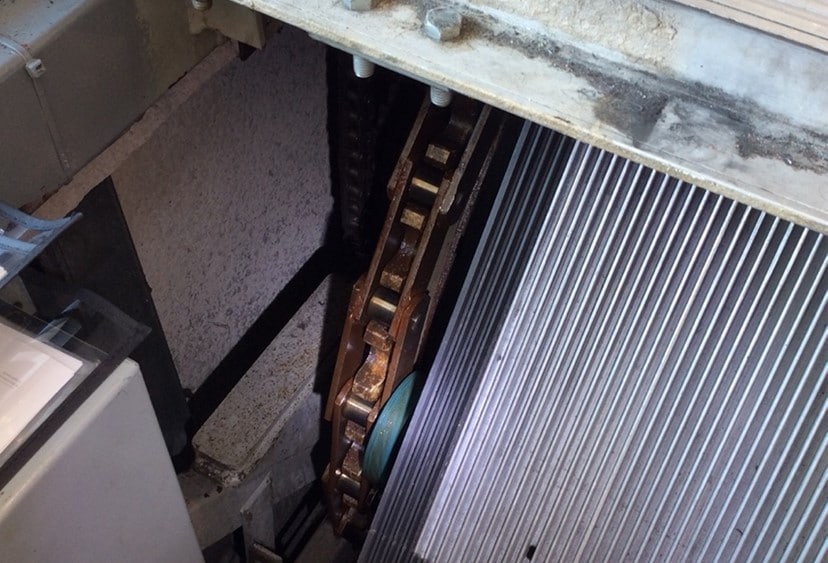
Chain rusting from environmental conditions is also a typical issue, especially for equipment that is outdoors in humid and/or salty environments.
Another problem I have seen is known as “tight joints,” as shown in the photo below. When a chain has tight joints, the chain won’t straighten out when under load, or is hard to bend by hand. Typically, in our industry, this is caused by inadequate lubrication and/or corrosion in the pin/bushing joint. If the chain has tight joints, it must be replaced.
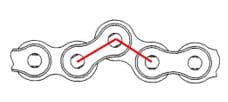
In all my years in the industry, I have only seen “turned pins” once. The phenomenon can be identified by the unaligned stakes or swedges on the end of the pins. The press fit between the pin(s) and link(s) is overcome and the pin(s) turn when articulating over the sprocket. This is usually due to inadequate lubrication and/or overloading. If a chain has turned pins, it must be replaced.

I have never seen escalator or moving walk chain with broken link plates unless they were broken due to stress corrosion. However, chain can fail in this manner. Typically, in the case of step/pallet chain, it would be the inner link plate that would fail from an overload because it usually has a cross-sectional area around the bushing that is smaller than the outer link has around the pin. On a precision roller chain, it could be either the inner or outer link. Obviously, if a chain has broken links, it must be replaced (after fishing it out of the most inaccessible place possible).

Chains can also fail from fatigue. If a well-made chain is applied per the manufacturer’s recommendations, fatigue failure is rare. Usually, chains fail from wear. A chain can fail in fatigue if it is operated at high load in a certain number of load cycles. The link plates crack from the pin hole to the outside edge, as shown in the photo below. This instruction is becoming repetitive — the chain must be replaced.

Broken pins can also occur from a tensile overload. During a step crash, escalator or moving walk step/pallet chain can experience pin failure. Some chains have extended pins to secure the steps/pallets or their axles. These extended pins are sometimes designed to break off, saving the unit from more extensive damage. Again, the chain must be replaced.
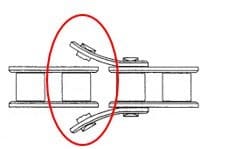
Finally, we come to stress corrosion. Steel that is hardened to a certain level, as some chain links are, can fail due to stress corrosion. Typically, if the chain is exposed to moisture or a chemical that causes the chain link to corrode, this, along with the stress from the press fit, can cause the link to crack (usually the pin or outer link). This is a relatively rare phenomenon, but I have examined escalator and moving walk step chains that have failed in this manner. The chain must be replaced and, to avoid reoccurrence of the problem, the environmental causes must be eliminated.
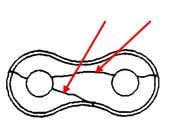
Summary
If you’ve noticed a common thread to potential chain problems in our industry, it’s that most are due to a lack of lubrication. Rarely is overloading a factor, since equipment is designed using the ASME A17.1 Safety Code for Elevators and Escalators factors of safety. Note that there are some lube-free chains out there, too.
Lubrication is critical to achieve a reasonable life-expectancy and to protect the chain from corrosion. My advice: get out there with your oil can and lube those chains!
Learning Objectives
Use the below learning-reinforcement questions to study for the Continuing Education Assessment Exam available online at Elevator Books or on p. 134 of this issue.
- What are the three types of chain primarily used in the vertical-transportation industry?
- What is the difference between the common use of the term “chain stretch” and wear?
- To be effective in prolonging chain life, what area must lubrication penetrate?
- What does it mean for a chain to have “tight joints”?
- What is the criteria for replacing an engineering class chain?
References
If you need more information on chain, I would like to suggest that you review the ASME B29 chain standards for the particular chain in which you are interested, or the ISO chain standards. In addition, the American Chain Association published a fantastic book, the “Standard Handbook of Chains, Second Edition.” This book is available on the Conveyor Equipment Manufacturer’s Association (CEMA) website.
Get more of Elevator World. Sign up for our free e-newsletter.
